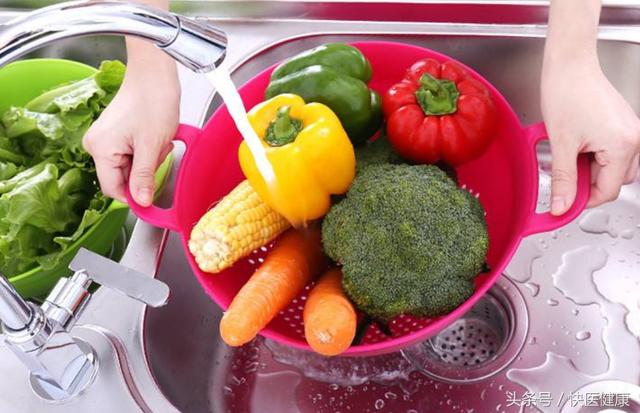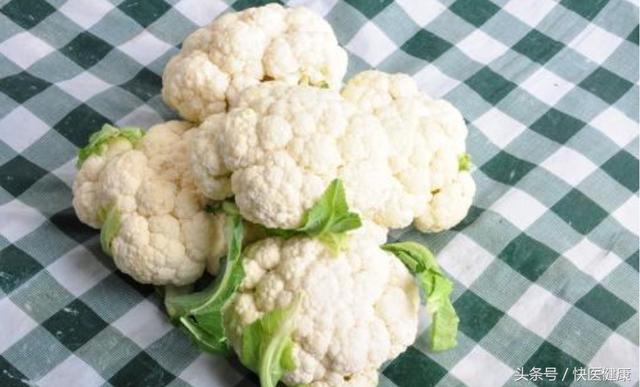Less doing these steps when washing vegetables is tantamount to eating pesticides into your stomach. Why don't you take a quick look?
Want to know more about health? Click ↗ in the upper right corner and follow us!

As we all know, most of the fruits and vegetables grown today are sprayed with pesticides, and the harm of pesticides to health is not to be underestimated:
After entering the human body, pesticides are not easily metabolized and excreted from the body, so they accumulate in the adipose tissue and liver of the body. If they are pesticides containing organophosphorus or organochlorine, they may cause neurotoxicity, liver poisoning, kidney failure and a variety of cancers.
Therefore, the best way to minimize the harm of pesticide residues to human health is to wash fruits and vegetables thoroughly. You may wonder, who doesn't know how to wash vegetables yet, but do you wash vegetables correctly? Can you wash the pesticides in fruits and vegetables?
The "five most common mistakes" that people make when washing vegetables

1. Wash vegetables with salt
Salt is composed of sodium chloride. Washing vegetables with salt will make pesticides more stable and will only kill cabbage worms.
2. Cut before washing
This mistake is more serious than washing vegetables with salt, because it increases the chances that the surface of vegetables will be contaminated by bacteria and pesticides, so they should be washed before cutting.
3. Prolong the soaking time
If fruits and vegetables are soaked for more than half an hour, it is easy to lose vitamins.
4. Clean with synthetic detergent
There will be the possibility of secondary pollutant residues.
5. Wash vegetables with rice water
Rice has its own risk of pesticide residues, so washing fruits and vegetables with rice washing water may help you more and more.

This kind of washing is not right, that kind of washing is not good, in the end how to deal with vegetables and fruits, so that they will not be "poisoned"?
Six tricks to remove pesticides from vegetables
1. Leafy vegetables-washing method

Sunlight can break down and destroy pesticides, so leafy vegetables can be scattered and left open for five minutes after you buy them home, and the content of organochlorine can be greatly reduced.
When cleaning, soak the fruits and vegetables for 3-5 minutes, then rinse with clean water for 2-3 times, without foam at all.
Cabbage and Chinese cabbage should first peel off 2 or 3 outer leaves, then peel them one by one and rinse them with a lot of water, then use a sponge brush or soft hair brush to remove the eggs or dirt, and then wash them with clean water for the second time.
2. Rugged vegetables-brushing method

For fruits and vegetables with rugged surfaces or fluffy skins, where they cannot be cleaned by hand, you can carefully scrub the surfaces with a soft brush and rinse with plenty of water, such as cauliflower and broccoli. This kind of vegetables are recommended to blanch with water before cooking.
3. Melons, eggplant, radish-peeling method
Cucumber, eggplant and radish are eaten after peeling as far as possible. although eggplant skin is rich in nutrients, it is recommended to peel when it is not safe.
Rinse with plenty of water before peeling, brush the surface with a soft brush, and dry the surface with paper towels after peeling, so that the dirt or dirty water will not contaminate the edible part. Cucumbers can be scrubbed with a little salt, peeled and eaten.
4. Chinese cabbage and green pepper-cutting method
When spraying pesticides, pakchoi will gather along the petiole at the base of the stalk, so the base of the stalk should be removed first; the pedicel of green pepper is sunken, and it is easy to gather pesticides, so it should be removed before cleaning.
After rinsing with running water, you can change a basin of new water and soak in two tablespoons of edible baking soda for a while. Acid-base neutralization can be used to remove some pesticides. Edible baking soda is water soluble and can be cleaned without residue.
5. Scalding at high temperature
After washing and eating leafy vegetables, it will be more reassuring to add scalding method. The lid of the pot should be left open when blanching, so that the pesticide residues can be decomposed and evaporated.
Pesticides may dissolve into the soup, so pour out the hot water and don't drink it.
6. Storage method
Non-perishable fruits and vegetables can be bought and stored for a few days, but do not put them directly in the refrigerator. During storage, the enzymes originally contained in the plant will gradually decompose the pesticide residues, such as melon, pumpkin, onion, taro, carrot, white radish and so on. Meat and seafood can also be cleaned.
1. Pork, beef
Soak the meat in baking soda for 5 minutes and then rinse, and the dirt can be washed away easily.
2. Fish
After the fish belly is cut open and washed, put the fish in cold water, and then pour a little vinegar and pepper into the water, which can greatly reduce the fishy smell of the fish. Or scrub with rice water several times, you can also pour two tablespoons of vinegar in cold water, put the fish into the wash, can reduce the fishy smell.
3. Crabs and shellfish
Wash the crab's shell with salt water, and then soak the crab in light salt water so that it can spit out its own dirt. Change the brine a few more times to make sure the crabs are washed clean.
Shellfish should be soaked in water for a while to help wash away the dirt.
- Prev

Are you still making tea with orange peel? You're drinking pesticides! Self-made tangerine peel is safe.
Orange peel alias: orange peel, expensive old peel, red peel, yellow orange peel, Guang orange peel, Xinhui peel, citrus peel. It is the mature pericarp of tangerine and its cultivated varieties of Rutaceae.
- Next

Arena of Valor experienced BUG: new skin leaks of many heroes of pesticides were exposed.
Today's experience service is updated, but today Arena of Valor's experience service appears BUG. A lot of new skin of the internal test suit has been exposed. Including teenage hackers.
Related
- Fuxing push coffee new agricultural production and marketing class: lack of small-scale processing plants
- Jujube rice field leisure farm deep ploughing Yilan for five years to create a space for organic food and play
- Nongyu Farm-A trial of organic papaya for brave women with advanced technology
- Four points for attention in the prevention and control of diseases and insect pests of edible fungi
- How to add nutrient solution to Edible Fungi
- Is there any good way to control edible fungus mites?
- Open Inoculation Technology of Edible Fungi
- Is there any clever way to use fertilizer for edible fungus in winter?
- What agents are used to kill the pathogens of edible fungi in the mushroom shed?
- Rapid drying of Edible Fungi

